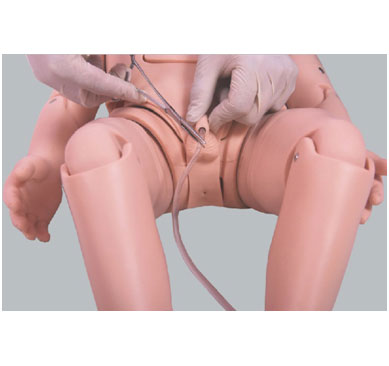08-05-2024
ADA MED SUPPLY LIMITED
In pediatric care, urinary catheterization is a common diagnostic and treatment method and is crucial to the recovery of pediatric patients. However, due to the physiological characteristics of pediatric patients, catheterization requires extremely high professional skills and rich practical experience. At this time, the pediatric catheterization model has become a powerful assistant for medical staff, providing great convenience for their learning and practice.

The pediatric catheterization model provides medical staff with a safe and controllable practice environment with its realistic and precise simulation effects. The model is designed with full consideration of the physiological characteristics and anatomical structure of pediatric patients. Every detail from the urethral opening to the bladder has been carefully crafted to ensure a high degree of consistency with the real situation. This allows medical staff to truly feel the insertion process of the urinary catheter during simulated operations, thereby becoming more familiar with and mastering this skill.
In practical applications, the pediatric catheterization model has demonstrated excellent performance and practicality. Medical staff can use the model to practice repeated catheterization operations and improve their operating skills and proficiency through continuous practice. At the same time, the model can also simulate various possible operational difficulties and abnormal situations, allowing medical staff to be more calm and confident when facing real patients.
In addition to basic operational exercises, the pediatric catheterization model can also meet higher-level training needs. By combining different teaching tools and teaching materials, medical staff can simulate various complex clinical scenarios and conduct targeted training. This flexible teaching method not only improves the skill level of medical staff, but also enhances their adaptability and comprehensive quality.
In addition, the pediatric catheterization model also has good durability and safety. The model made of high-quality materials not only has a stable structure and long service life, but is also non-toxic and harmless and will not cause any harm to medical staff and patients. This enables the model to be widely used in various situations and provides great convenience for the training and education of medical staff.
In conclusion, the pediatric catheterization model is an indispensable teaching tool in pediatric nursing. With its realistic, detailed simulation effects and excellent performance, it provides medical staff with a safe and controllable practice environment, helping them improve their catheterization skills and ability to deal with complex situations. In future pediatric care, pediatric catheterization models will continue to play an important role in protecting the healthy growth of pediatric patients.